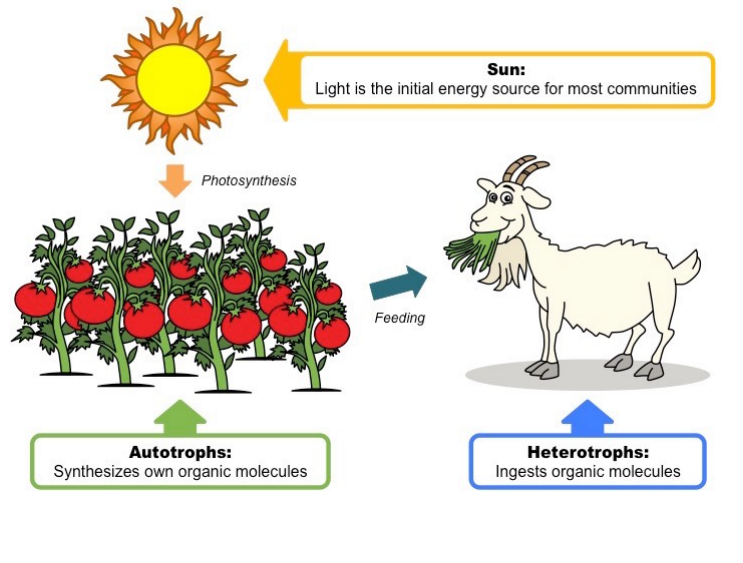Lecture Notes

Autotrophs (“self feeders”) are organisms that CAN build their own energy-rich macromolecules Photoautotrophs (like plants) use the energy of light to do this ^ Chemoautotrophs (like some bacteria) use the energy of inorganic molecules (like sulfur or ammonia)
Because humans CANNOT make these molecules themselves, we are considered heterotrophs (“other feeders”) Animals, fungi, and most bacteria are also heterotrophs.

Photosynthesis is the process used by plants to transform light energy (and carbon dioxide and water) into glucose
Homework Answers
One "goal" of the light reactions of photosynthesis is to generate ATP. The light reactions of photosynthesis occur In the thylakoid membrane (of a chloroplast)
Rubisco is the enzyme that performs carbon fixation.
ATP Synthase is the enzyme that uses the proton gradient to build ATP.
Photosystems (I and II) is the name of the complexes where light is used to energize electrons.
Six carbon dioxide (CO2) are needed to generate one new glucose molecule (C6H12O6)
Cellular respiration & Photosynthesis are connected to each other in that cellular respiration generates carbon dioxide, which is used in photosynthesis.
Oxygen is made during the process of photosynthes when Photosystem II breaks down H2O to generate it.
The special electrons for Photosystem I (PSI) come from Photosystem II (PSII)
G3P (Glyceraldehyde-3-phosphate) is organic compound is the direct output of the Calvin cycle
A reactant (a.k.a. starting material) of the Calvin Cycle is ATP
Plants are an example of an organism that would be considered an autotroph